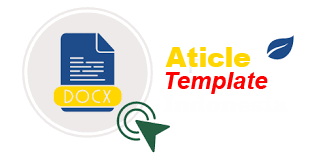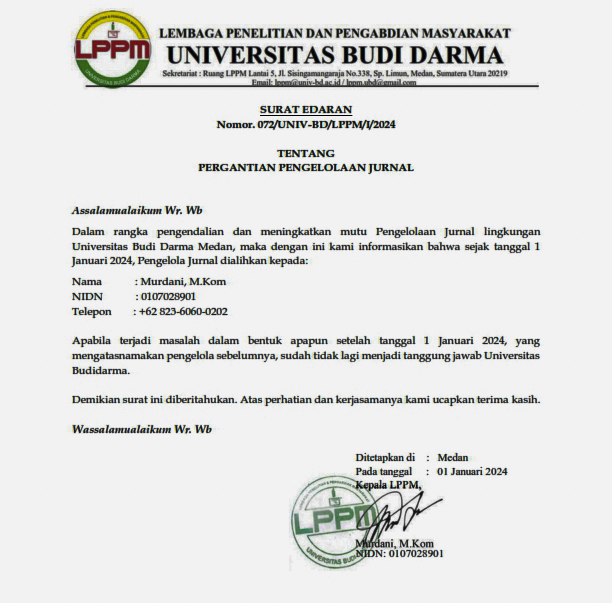Pemodelan Klasifikasi Untuk Menentukan Penyakit Diabetes dengan Faktor Penyebab Menggunakan Decision Tree C4.5 Pada Wanita
DOI:
https://doi.org/10.30865/json.v4i4.6202Keywords:
Decision Tree Algorithm, Diabetes, Decision Tree, Classification, Data MiningAbstract
Diabetes is closely related to the pancreas, where the pancreas produces the natural hormone insulin, but its function is problematic which causes an increase in blood sugar levels in the body. Rising blood pressure can affect organ function in damaging the function of organs in a person's body such as the kidneys, heart and brain. Where makes a person have a history of diabetes. Diabetes that attacks adults can be prevented through exercise and a regular and healthy diet. According to the International Diabetes Federation (IDF) organization, it is estimated that at least 19.5 million Indonesian people between the ages of 20 and 79 will suffer from diabetes in 2021. China is in first place with diabetes with 140.9 million people. India is next in line with the number of people with diabetes of 74.2 million people. Therefore, early diagnosis is very important because it aims to reduce diabetes and diabetes complications in the future. It is necessary to collect data on patients with diabetes who are expected to be able to do prevention. Therefore applying classification techniques with data mining with the C4.5 algorithm. Where the classification can achieve better accuracy. Algorithm C4.5 is generally used in determining the nodes of a decision tree. Based on the test results, the accuracy is 76.67 percent, the precision is 72 percent, and the recall is 41.67 percent.
References
M. I. Mahdi, “Penderita Diabetes Indonesia Terbesar Kelima di Dunia,†2 Februari, 2022. .
I. Fida et al., “I a c d k p d,†pp. 1–8, 2023.
D. K. Gautam et al., â€œÐœÐ¸ÐºÑ€Ð¾Ð°Ð»ÑŒÐ±ÑƒÐ¼Ð¸Ð½ÑƒÑ€Ð¸Ñ ÐŸÑ€ÐµÐ´Ð¸ÐºÑ‚Ð¾Ñ€ СердечноÑоÑудиÑтого РиÑка У Больных Сахарным Диабетом 1-Го И 2-Го Типов Без ОÑложнений,†BMC Res. Notes, vol. 10, no. 1, pp. 1–4, 2019.
S. Putri, E. Irawan, and F. Rizky, “Implementasi Data Mining Untuk Prediksi Penyakit Diabetes Dengan Algoritma C4.5,†Januari, vol. 2, no. 1, pp. 39–46, 2021.
F. M. Hana, “Klasifikasi Penderita Penyakit Diabetes Menggunakan Algoritma Decision Tree C4.5,†J. SISKOM-KB (Sistem Komput. dan Kecerdasan Buatan), vol. 4, no. 1, pp. 32–39, 2020, doi: 10.47970/siskom-kb.v4i1.173.
N. Noviandi, “Implementasi Algoritma Decision Tree C4.5 Untuk Prediksi Penyakit Diabetes,†Indones. Heal. Inf. Manag. J., vol. 6, no. 1, pp. 1–5, 2018.
V. No et al., “Klasifikasi Penyakit Jantung Menggunakan Algoritma Decision Tree Series C4 . 5 Dengan Rapidminer,†vol. 5, no. 2, pp. 73–83, 2023.
M. Yusa, E. Utami, and E. Luthfi. Taufiq, “Evaluasi Performa Algoritma Klasifikasi Decision Tree ID3, C4.5, dan CART Pada Dataset Readmisi Pasien Diabetes,†Infosys (Information Syst. J., vol. 4, no. 1, pp. 23–34, 2016.
I. Mubarog, A. Setyanto, and H. Sismoro, “Sistem Klasifikasi Pada Penyakit Breast Cancer Dengan Menggunakan Metode Naïve Bayes,†Creat. Inf. Technol. J., vol. 6, no. 2, p. 109, 2021, doi: 10.24076/citec.2019v6i2.246.
A. H. Nasrullah, “Implementasi Algoritma Decision Tree Untuk Klasifikasi Produk Laris,†J. Ilm. Ilmu Komput., vol. 7, no. 2, pp. 45–51, 2021, doi: 10.35329/jiik.v7i2.203.
K. F. Irnanda, D. Hartama, and A. P. Windarto, “Analisa Klasifikasi C4.5 Terhadap Faktor Penyebab Menurunnya Prestasi Belajar Mahasiswa Pada Masa Pandemi,†J. Media Inform. Budidarma, vol. 5, no. 1, p. 327, 2021, doi: 10.30865/mib.v5i1.2763.
L. N. Rani, “Klasifikasi Nasabah Menggunakan Algoritma C4.5 Sebagai Dasar Pemberian Kredit,†INOVTEK Polbeng - Seri Inform., vol. 1, no. 2, p. 126, 2016, doi: 10.35314/isi.v1i2.131.
E. P. Cynthia and E. Ismanto, “Metode Decision Tree Algoritma C.45 Dalam Mengklasifikasi Data Penjualan Bisnis Gerai Makanan Cepat Saji,†Jurasik (Jurnal Ris. Sist. Inf. dan Tek. Inform., vol. 3, no. July, p. 1, 2018, doi: 10.30645/jurasik.v3i0.60.
D. Sartika and D. I. Sensuse, “Perbandingan Algoritma Klasifikasi Naive Bayes, Nearest Neighbour, dan Decision Tree pada Studi Kasus Pengambilan Keputusan Pemilihan Pola Pakaian,†Jatisi, vol. 1, no. 2, pp. 151–161, 2017.
B. Novianti, T. Rismawan, and S. Bahri, “Implementasi Data Mining Dengan Algoritma C4.5 Untuk Penjurusan Siswa (Studi Kasus: Sma Negeri 1 Pontianak),†J. Coding, Sist. Komput. Untan, vol. 04, no. 3, pp. 75–84, 2016.
H. Widayu, S. D. Nasution, N. Silalahi, and Mesran, “Data Mining Untuk Memprediksi Jenis Transaksi Nasabah Pada Koperasi Simpan Pinjam Dengan Algoritma C4.5,†Media Inform. Budidarma, vol. Vol 1, No, no. 2, p. 37, 2017.
S. Widaningsih, “Perbandingan Metode Data Mining Untuk Prediksi Nilai Dan Waktu Kelulusan Mahasiswa Prodi Teknik Informatika Dengan Algoritma C4,5, Naïve Bayes, Knn Dan Svm,†J. Tekno Insentif, vol. 13, no. 1, pp. 16–25, 2019, doi: 10.36787/jti.v13i1.78.
I. Junaedi, N. Nuswantari, and V. Yasin, “Perancangan Dan Implementasi Algoritma C4 . 5 Untuk Data Mining,†J. Inf. Syst. Informatics Comput., vol. 3, no. 1, pp. 29–44, 2019, [Online]. Available: http://journal.stmikjayakarta.ac.id/index.php/jisicom/article/view/203%0Ahttp://journal.stmikjayakarta.ac.id/index.php/jisicom/article/download/203/158.
J. Eska, “Penerapan Data Mining Untuk Prekdiksi Penjualan Wallpaper Menggunakan Algoritma C4.5 STMIK Royal Ksiaran,†JURTEKSI (Jurnal Teknol. dan Sist. Informasi), vol. 2, pp. 9–13, 2016.
F. Riandari and A. Simangunsong, “Penerapan Algoritma C4.5 Untuk Mengukur Tingkat Kepuasan Mahasiswa,†Pap. Knowl. . Towar. a Media Hist. Doc., vol. 5, no. 2, pp. 40–51, 2019.
Downloads
Published
How to Cite
Issue
Section
License

This work is licensed under a Creative Commons Attribution 4.0 International License
Authors who publish with this journal agree to the following terms:
- Authors retain copyright and grant the journal right of first publication with the work simultaneously licensed under Creative Commons Attribution 4.0 International License that allows others to share the work with an acknowledgment of the work's authorship and initial publication in this journal.
- Authors are able to enter into separate, additional contractual arrangements for the non-exclusive distribution of the journal's published version of the work (e.g., post it to an institutional repository or publish it in a book), with an acknowledgment of its initial publication in this journal.
- Authors are permitted and encouraged to post their work online (e.g., in institutional repositories or on their website) prior to and during the submission process, as it can lead to productive exchanges, as well as earlier and greater citation of published work (Refer to The Effect of Open Access).





